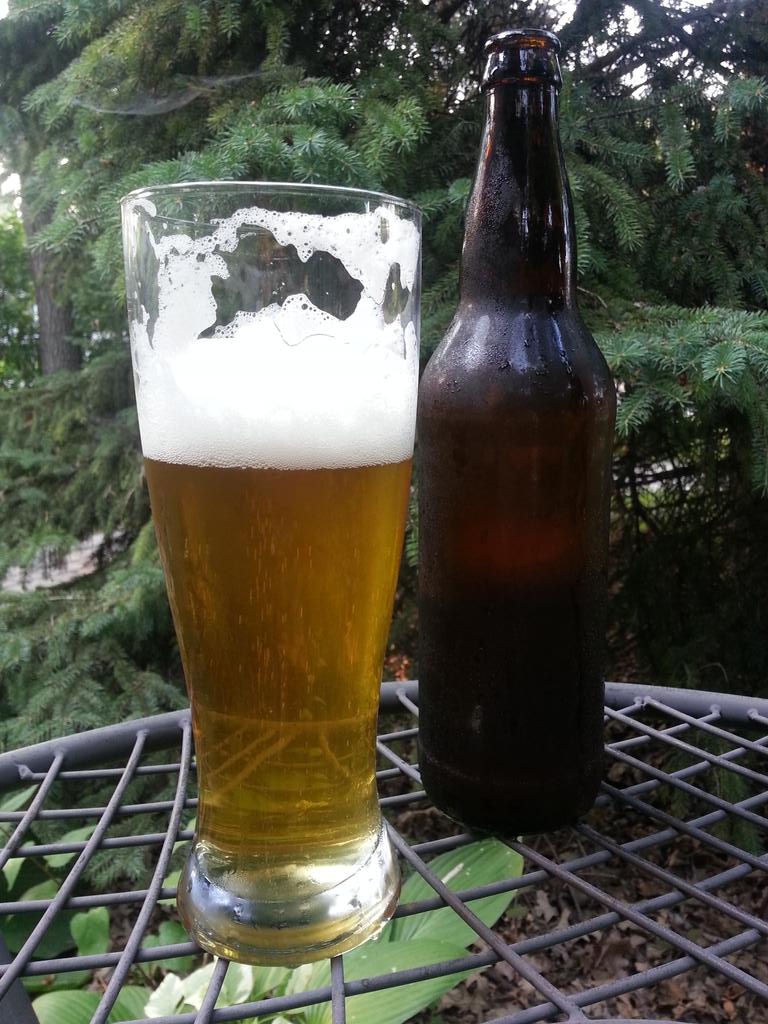Hi everyone - I apologize if this recipe question is in the wrong sub forum. Please correct me if I should be posting elsewhere.
I'm about to attempt my second partial mash. After the first attempt (results still pending) I decided I needed some practice with the process before attempting anything super fancy. I decided to make a cream ale because most of my family and friends like them. Here's what I'm thinking:
3.5 lbs 2-row barley
1 lb flaked corn
0.5 lb carapils
3.3 lb LME
1.5 oz cascade 60 min
0.5 oz cascade 5 min
Nottingham
The 2-row barley is locally produced. I suppose 6-row might work better with the corn. Any thoughts?
Carapils - take it or leave it? I'm going for extra smooth mouthfeel and thought it might help.
I considered reducing the LME and replacing some of it with dextrose to keep the body light. Any suggestions?
I'm using cascade because they're inexpensive here and I have some on hand, plus I appreciate their versatility. I think what I have puts me outside official style guidelines, but I feel like my last couple batches have been a little underhopped, so I'm compensating a bit.
I have an old deep freezer in my basement that no longer functions. I was thinking of freezing blocks of ice outside now that it's cold and using my makeshift icebox for a couple weeks of secondary. To that end, I'm also playing around with the idea of using irish moss or gelatin to get the beer as clear as possible. Any suggestions? Or suggested reading?
Basically I'm going for a light, easy drinking, accessible/crowd pleasing house ale type recipe that can serve as a testing ground for more exotic ingredients in the future.
Thanks in advance!
Update:
I made some changes to the recipe based on the feedback I received here as well as what I had available. Here's what I ended up with.
3.5 lb 2-row malted barley
1 lb flaked corn
0.5 lb carapils
2.64 lb light LME
0.25 lb dextrose
1 oz Glacier 5.6% AA - 55 min
Safale US-05
90 min mash @ 150F
sparge @ 160F
90 min boil - full volume
Starting volume - 6.5 gallons
Final volume - 5 gallons
Target OG - 1.049
Target FG - 1.007
5.5% ABV
20 IBU
I decided to add a bit of dextrose because I needed to buy either slightly less or significantly more LME than I wanted, and I already have quite a bit of dextrose at home.
SWMBO has a nose like a bloodhound, so I took her to smell hops for me. She chose glacier. I played around with brewtoad, and Paradingbull's suggestion for a single 1oz hop addition at 55 minutes came out right at the IBU's I was going for.
Thanks again for your suggestions, I'll let you know how it turns out!
I'm about to attempt my second partial mash. After the first attempt (results still pending) I decided I needed some practice with the process before attempting anything super fancy. I decided to make a cream ale because most of my family and friends like them. Here's what I'm thinking:
3.5 lbs 2-row barley
1 lb flaked corn
0.5 lb carapils
3.3 lb LME
1.5 oz cascade 60 min
0.5 oz cascade 5 min
Nottingham
The 2-row barley is locally produced. I suppose 6-row might work better with the corn. Any thoughts?
Carapils - take it or leave it? I'm going for extra smooth mouthfeel and thought it might help.
I considered reducing the LME and replacing some of it with dextrose to keep the body light. Any suggestions?
I'm using cascade because they're inexpensive here and I have some on hand, plus I appreciate their versatility. I think what I have puts me outside official style guidelines, but I feel like my last couple batches have been a little underhopped, so I'm compensating a bit.
I have an old deep freezer in my basement that no longer functions. I was thinking of freezing blocks of ice outside now that it's cold and using my makeshift icebox for a couple weeks of secondary. To that end, I'm also playing around with the idea of using irish moss or gelatin to get the beer as clear as possible. Any suggestions? Or suggested reading?
Basically I'm going for a light, easy drinking, accessible/crowd pleasing house ale type recipe that can serve as a testing ground for more exotic ingredients in the future.
Thanks in advance!
Update:
I made some changes to the recipe based on the feedback I received here as well as what I had available. Here's what I ended up with.
3.5 lb 2-row malted barley
1 lb flaked corn
0.5 lb carapils
2.64 lb light LME
0.25 lb dextrose
1 oz Glacier 5.6% AA - 55 min
Safale US-05
90 min mash @ 150F
sparge @ 160F
90 min boil - full volume
Starting volume - 6.5 gallons
Final volume - 5 gallons
Target OG - 1.049
Target FG - 1.007
5.5% ABV
20 IBU
I decided to add a bit of dextrose because I needed to buy either slightly less or significantly more LME than I wanted, and I already have quite a bit of dextrose at home.
SWMBO has a nose like a bloodhound, so I took her to smell hops for me. She chose glacier. I played around with brewtoad, and Paradingbull's suggestion for a single 1oz hop addition at 55 minutes came out right at the IBU's I was going for.
Thanks again for your suggestions, I'll let you know how it turns out!



